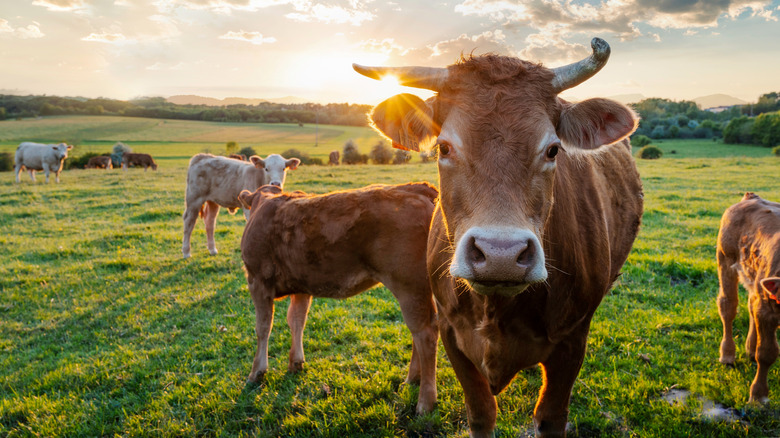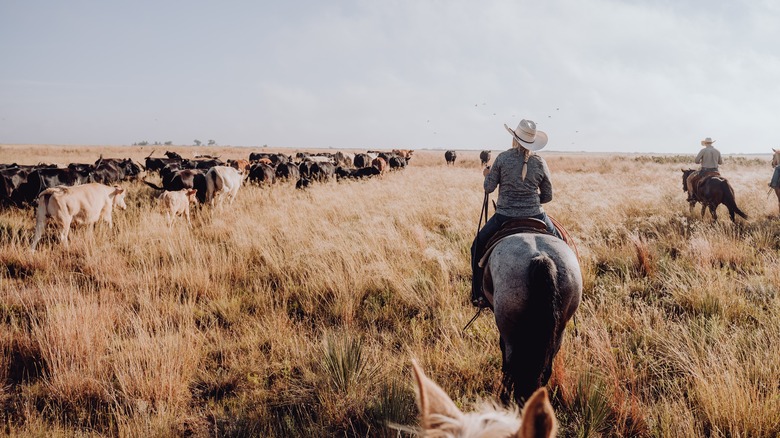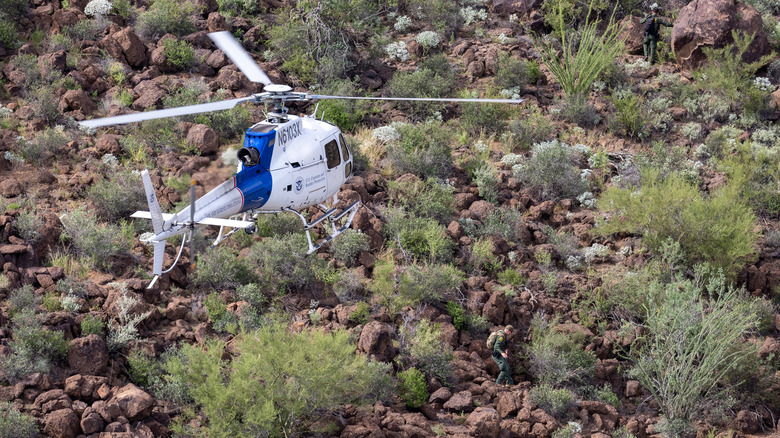Inside New Mexico's Battle To Shoot Cows From Helicopters
Well, we've finally reached peak society. Not only is it legal to heft a rifle and take aim at domestic cattle, but also to do so from a vantage point that leaves that cattle wholly unable to trample you or even peer into your eyes before they die: the sky. That is, provided you live in New Mexico, are a member of the U.S. Forest Service, get a call about some cows gone rogue, and get sent toward the clouds on an extermination mission to go pew-pew from a helicopter's open door. So, like ... three people?
We kid, we kid. But really: that was the plan in a nutshell, as Reuters explains. We say "was" because it already happened from February 23 to 26. There'd been a rash of rowdy cows menacing the New Mexican countryside, so the valiant folks at the U.S. Forest Service — an agency within the U.S. Department of Agriculture — went on a "cull," as another Reuters article puts it. To be fair, it wasn't as willy-nilly as randomly roving the countryside on the prowl for mobile cuts of beef. As the second Reuters article says, the U.S. Forest Service made an intentional, deliberate decision to deal with the problem of feral cows — stray cows gone missing from their pack — by dispatching a specifically sanctioned mission to eliminate about 150 of them from the grass below. Local ranchers, though, weren't too happy about it and called the whole thing inhumane.
An invasive species on protected land
The reader might be wondering exactly what oversight the U.S. Forest Service has over private cattle on private land. To that we say: none at all. The cattle in question, as Reuters says, made their way into Gila National Forest, a protected national forest overseen by the U.S. Forest Service and comprising nearly 3 million acres of land. A little under 800,000 of those acres constitute conserved wilderness, i.e., undeveloped land allowed to grow and develop naturally. The largest of these sections is simply dubbed the Gila Wilderness and is a single swath of about 560,000 acres. It's this area that the U.S. Forest Service targeted.
As The Wildlife News says, the cows were not only a nuisance to visitors but also damaging to native wildlife, particularly those that hang around water sources. Cows tend to gather near streams, brooks, pools, etc., and graze, which causes severe damage to soil. It also puts indigenous species, like wolves, owls, frogs, snakes, and so on, at risk. An official U.S. Forest Service press release from Camille Howes, Gila National Forest Supervisor, reads, "Removal of unauthorized cattle is necessary to protect the habitat of aquatic and terrestrial wildlife, including federally listed threatened and endangered species." It continues, "The unauthorized cattle in the Gila Wilderness trample stream banks and springs, causing erosion and sedimentation. This proposal will help restore the wilderness character of the Gila Wilderness by removing non-native species and alleviating the damage caused by over-grazing."
Tension between ranchers and government
This isn't the first time that authorities have had to get rid of stray cows in the Gila National Forest. Since 1994, the U.S. Forest System has removed over 640 "unauthorized and unbranded" cows from the area. "Unbranded" is key, and means that the cows don't belong to anyone; it's not possible to just scuttle them off to this or that rancher. This stray cow problem started back in the 1970s, so the current death-from-the-skies solution comes at the end of a long, decades-old ethical dilemma and set of back-and-forth disagreements between authorities and ranchers.
As the reader can imagine, ranchers prefer a "less risky" approach, as The New York Times says — one that doesn't endanger people, animals, or private property. The New Mexico Cattle Growers' Association — a group of over 1,000 ranchers — stands in staunch opposition to the plan. President Loren Patterson advocates a slower, more methodical, and far more strenuous plan of rounding up the cattle by hand. In response, U.S. Forest Service spokesperson Suzanne Flory has simply said, "The most efficient way to deal with this issue is with the responsible removal of the cattle," which in this case means gunfire from helicopters. The U.S. Forest Service also made it clear that they scouted the area ahead of time to try and assess the exact location and numbers of stray cattle. Perhaps now that the deed is done there's enough time to talk about alternatives in the future.


